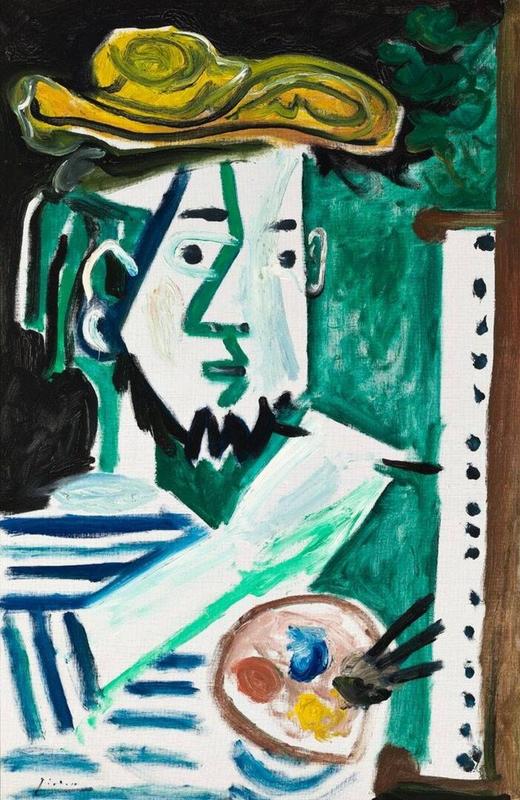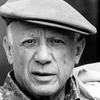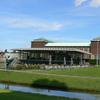More about The Painter

Contributor
Picasso's The Painter is a product of the self-reflective investigations of the great artist in his early eighties.
At his last estate, La Californie in Cannes, France, Picasso had become a walking, talking civic monument, a human tourist attraction, drawing visitors, admirers, well-wishers, critics, adversaries, collectors, solicitors, and sycophants from all over the world. Picasso thrived in chaos, but this kind of success was getting in the way of his work, so he packed up and said goodbye to Cannes, following the trail of one of his many heroes of European painting, Paul Cézanne. Picasso bought a castle which was once owned by a friend of Voltaire, le Château de Vauvenargues, near Aix-en-Provence. The castle had six hundred years under its belt and a view of Mont Saint-Victoire, the largest and, arguably, most beautiful muse of Cézanne, who lived nearby and painted the mountain, in all her stoic glory, in a number of different poses, marveling at the ever-changing quality of the idyllic scene.
Picasso started to get his mojo back in le Château de Vauvenargues, amid a flurry of public honors and other exposures. In the States, his daughter Paloma, who he and his ex, the painter and biographer Françoise Gilot, had named after the Dove of Peace, was starting to spend lots of time with Andy Warhol and his Factory crowd. Gilot and Picasso didn't marry, partly because, believe it or not, divorce was illegal under Spanish law, and Picasso was still married to his first wife.
Both La Californie and le Château de Vauvenargues are useful props in Picasso's construction, however conscious, of himself as a mythical figure. In the thousands of years of mythology, there are very few records of mythical figures in the streets of the city, with apologies to the likes of Catwoman and Spiderman. Picasso was, in the late John Berger's prescient words, a "magician," and one of the methods of his magic was to draw urban attention toward his rural retreat, with all of the relative mystery that country life implies.
In 2017, the Boijmans museum displayed this work on its website, but the record of it seems to have disappeared since then. A reverse image search of this work reveals mostly bloggers who've chosen this "secret" Picasso as an avatar, including the aptly-named Chinese-language blog Love Acceleration, which promises to improve your "love skills and abilities." In March and April of 1963, Picasso did "more than a dozen pictures of an artist at work," all of which show "an artist in profile, seated before an easel on the right," writes Michael C. FitzGerald and William Robinson. Additionally, there are at least six 1963 Picassos with this title (La Peintre), so there is all kinds of uncertainty about these works among scholars. Back in 1983, a private collector donated this work to the Boijmans museum. I haven't seen a photo of Picasso from any era where he has a goatee, but maybe it's out there somewhere in a collector's vault, or right under my nose and I missed it. Nonetheless, Tanja van Oostrum of the Boijmans writes that, due to the Breton-striped sweater of the artist pictured in this work, it's "very likely" a self-portrait.
Sources
- "Ask anything." Boijmans, https://web.archive.org/web/20171104035922/http://collectie.boijmans.nl….
- Berger, John. The Success and Failure of Picasso. New York: Knopf Doubleday, 2011.
- Ely, Bruno. Picasso, Cézanne: exposition , Musée Granet, Aix-en-Provence, 25 mai-27 septembre 2009. Paris: Réunion des Musées Nationaux, 2009.
- FitzGerald, Michael C., and William Robinson. Picasso: The Artist's Studio. New Haven: Yale University Press, 2001.
- Lan, Zhuan. "恋爱商速成." Zhihu, https://zhuanlan.zhihu.com/c_163731986.
- dePalma, Anthony. "Swissair Jet's Cargo Had Painting By Picasso and Other Valuables." The New York Times, Sep. 15, 1998, https://www.nytimes.com/1998/09/15/nyregion/swissair-jet-s-cargo-had-pa….
- "The Painter." Boijmans, https://web.archive.org/web/20171104035922/http://collectie.boijmans.nl….











